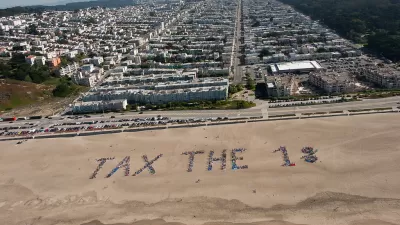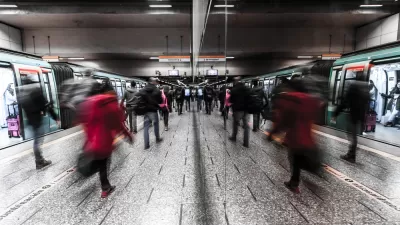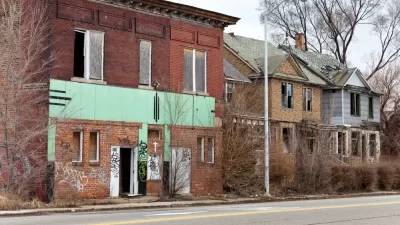Against a backdrop of increasing spatial segregation of incomes, Robert J. Sampson looks at how neighborhood inequality influences multiple aspects of everyday life. How we address such inequality indicates what kind of society we want to be.
"Fifty years after the Rev. Dr. Martin Luther King Jr. pointed to African-Americans on a 'lonely island of poverty in the midst of a vast ocean of material prosperity,' racial and economic disparities by place not only remain but are closely connected," writes Sampson, professor of the social sciences at Harvard University, in a commentary for The New York Times. "The great neighborhood divide extends to many of the fundamentals of well-being. Violence, poor physical health, teenage pregnancy, obesity, fear and dropping out of school are all unequally distributed."
"The persistent geography of inequality is reinforced by exclusionary zoning, persistent red lining, selective withdrawal of public services, the segregation of low-income public housing, 'stop and frisk' policing concentrated in minority areas, school funding tied to property values and the political fragmentation of metropolitan areas," he explains.
"The good news is that we are experimenting with a number of policies, some place-based and others person-based. Both are needed, but in either case the durability of poverty calls for profound long-term investments."
FULL STORY: Division Street, U.S.A.

Study: Maui’s Plan to Convert Vacation Rentals to Long-Term Housing Could Cause Nearly $1 Billion Economic Loss
The plan would reduce visitor accommodation by 25,% resulting in 1,900 jobs lost.

Alabama: Trump Terminates Settlements for Black Communities Harmed By Raw Sewage
Trump deemed the landmark civil rights agreement “illegal DEI and environmental justice policy.”

Why Should We Subsidize Public Transportation?
Many public transit agencies face financial stress due to rising costs, declining fare revenue, and declining subsidies. Transit advocates must provide a strong business case for increasing public transit funding.

Paris Bike Boom Leads to Steep Drop in Air Pollution
The French city’s air quality has improved dramatically in the past 20 years, coinciding with a growth in cycling.

Why Housing Costs More to Build in California Than in Texas
Hard costs like labor and materials combined with ‘soft’ costs such as permitting make building in the San Francisco Bay Area almost three times as costly as in Texas cities.

San Diego County Sees a Rise in Urban Coyotes
San Diego County experiences a rise in urban coyotes, as sightings become prevalent throughout its urban neighbourhoods and surrounding areas.
Urban Design for Planners 1: Software Tools
This six-course series explores essential urban design concepts using open source software and equips planners with the tools they need to participate fully in the urban design process.
Planning for Universal Design
Learn the tools for implementing Universal Design in planning regulations.
Smith Gee Studio
Alamo Area Metropolitan Planning Organization
City of Santa Clarita
Institute for Housing and Urban Development Studies (IHS)
City of Grandview
Harvard GSD Executive Education
Toledo-Lucas County Plan Commissions
Salt Lake City
NYU Wagner Graduate School of Public Service





























